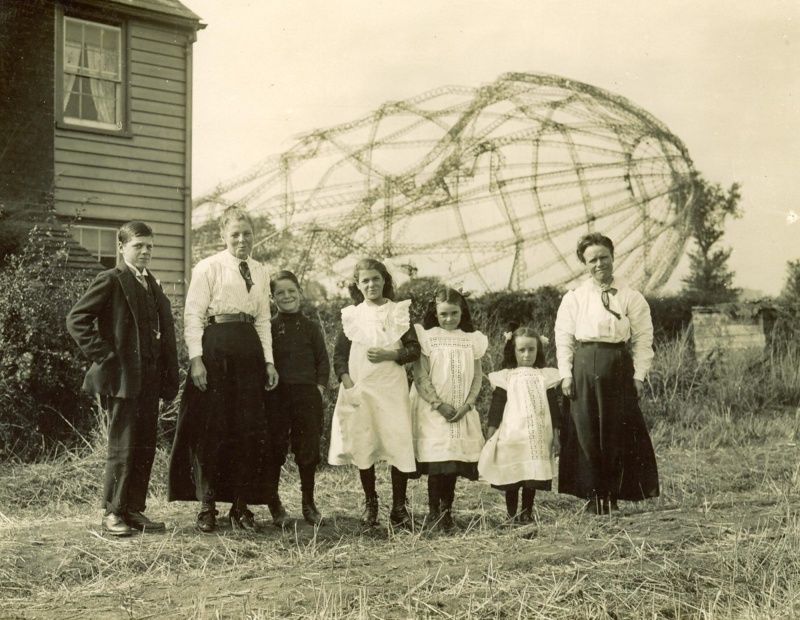|
|
Post by Dave Homewood on Aug 15, 2014 18:31:16 GMT 12
I just want to throw this out there. While all the hooplah over the Centenary of WWI is cranking up, which New Zealanders who served in the First World War Air Force/s do you most admire, or which do you think have the most interesting stories? It doesn't need to be big names like Caldwell or Park, perhaps you know of some lesser known stories or people that you'd like to share and remember?
|
|
|
|
Post by angelsonefive on Aug 15, 2014 19:00:18 GMT 12
Here is a name for you, Dave.
Captain Joseph (Joe) Hammond, RFC and RAF.
Born in NZ in 1886, died in an air crash at Indianapolis, USA in September 1918.
Said to be the most experienced British aviator of the time with an unconfirmed total of 6,000 hours in the air.
|
|
|
|
Post by errolmartyn on Aug 15, 2014 20:24:18 GMT 12
Here is a name for you, Dave. Captain Joseph (Joe) Hammond, RFC and RAF. Born in NZ in 1886, died in an air crash at Indianapolis, USA in September 1918. Said to be the most experienced British aviator of the time with an unconfirmed total of 6,000 hours in the air. And you can read all about him here in my recently-published: A Passion for Flight – New Zealand aviation before the Great War
Volume Three: The Joe Hammond story and military beginnings 1910-1914. Errol |
|
|
|
Post by nuuumannn on Aug 30, 2014 1:54:56 GMT 12
I find the tale of Alfred de Bathe Brandon attempting to bring down Zeppelins a fascinating one. Here is a snippet from his report on his encounter with L 33 on the night of 23/24 September 1916; “After putting on a drum of ammunition I came up behind the Zeppelin and on raising the gun jerked it out of the mounting, the gun and the yoke falling across the nacelle. I managed to replace the gun, but in the meantime had passed under and past the Zeppelin. I turned and passed along it again… …but we passed each other too quickly for me to take aim… The Brock ammunition seemed to be bursting all along it but the Zeppelin did not catch fire. I was using Brock, Pomeroy and sparklet [types of explosive bullets]. I turned again and put on a fresh drum and came up from behind and fired again. The gun jammed after nine rounds… I first saw the Zeppelin at 12:13 and lost it at 12:33.” Although the majority of damage to the airship was done by an anti aircraft gun, unbeknownst to Brandon, his bullets had punctured a fuel tank and the ship, losing height ad fuel crash landed virtually intact, apart from a destroyed gas cell from the AA hit across two fields at New Hall Farm, near Little Wigborough, Essex. On landing the crew fired a flare into its hull to destroy it, but the fire alerted the authorities. Special Constable Edgar Nicholas, on duty that night hopped on his bicycle and came across 22 dishevelled men walking solemnly along a darkened road and promptly arrested them with his revolver! The airship provided an intelligence coup for the British, it was an example of the biggest class of Zeppelin then built, the Super Zeppelins as they were called. At the time, the admiralty was tasked with the design and construction of British rigid airships and instead of using British expertise, relied heavily on German technology captured from crashed airships. Because of L 33's much complete state, its design was used as the basis of Britain's 33 Class of rigid airship - the designation was purely coincidental, 33 was the next number for use on a British airship. This was R.33, built by Armstrong Whitworth at Barlow, Near Selby, Yorkshire and R.34, built by Beardmore's at Inchinnan on the Clyde. R.34 of course became the first airship to cross the Atlantic and made the first return crossing by air in 1919. Here's a lovely picture of the family who occupied New Hall Farm Cottage the morning after the airship arrived rather suddenly outside their house.  Photo courtesy of the RAF Museum. I wrote an article on this episode in NZ Av News a few years back now. |
|
|
|
Post by nuuumannn on Aug 30, 2014 12:55:27 GMT 12
As a result of being involved in the interception of two airships but not being credited with their destruction, Brandon was named in one post war source as the unluckiest man in the RFC. I forgot to mention another New Zealand connection in this little stoush, the Pomeroy incendiary bullet was the invention of Invercargill man John Pomeroy.
|
|

